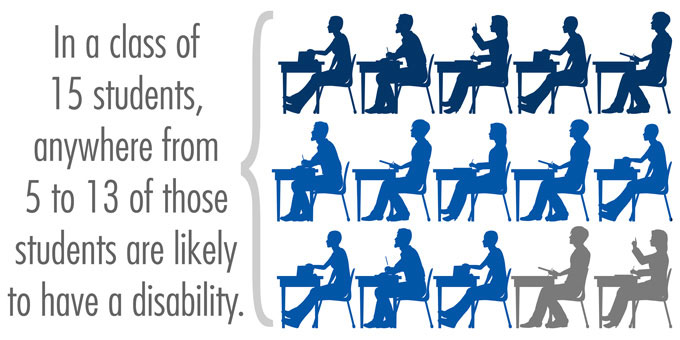What is transition planning and why is it important?
Page 1: Incarcerated Youth
Glossary of Key Terms
Delinquent: A minor who commits a status offense or criminal act (e.g., truancy, theft).
status offense
Conduct that would not be a crime were it committed by an adult (e.g., truancy, the consumption of alcohol).
Juvenile justice system: A system that manages juveniles charged with and found involved in delinquent or criminal behavior; includes the juvenile court system and juvenile justice settings.
Incarcerate: To subject to confinement (e.g., to incarcerate in a juvenile justice facility).
In the United States, on any given day, roughly 54,000 youth* aged 10–17 reside in juvenile corrections (JC) settings. JC settings are secure facilities where youth remain anywhere from a few months to several years following a judge’s determination that they broke the law and are therefore delinquent. Others are only held for a short time, usually up to two weeks, in secure facilities referred to as juvenile detention (JD) settings. This module will focus on youth in JC settings.
Many of these youth come from single-parent homes and unsafe neighborhoods, and many have experienced homelessness and been involved in the child-welfare system. Additionally, a substantial number of these youth are far below grade level in math and reading, have repeated a grade, and lack adequate social-emotional skills. As the graphic below illustrates, approximately 30% are between the ages of 13 and 15, while the largest segment of incarcerated youth, almost 70%, are age 16 and above. Youth from diverse backgrounds tend to be over-represented in this population, as do youth in the foster-care system. The majority is male.

Source: Office of Juvenile Justice and Delinquency Prevention
The first pie chart illustrates some statistical information about youth in juvenile justice facilities. The chart is labeled “Age” and is divided into three wedges. The smallest segment is labeled “12 and under 1.3%,” the second segment is labeled “13-15 29.8%,” and the largest segment “16+ 68.9%.” The second pie chart illustrates some statistical information about youth in juvenile justice facilities. The chart is labeled “Gender” and is divided into two wedges. The smaller of the two segments is labeled “Females 14%” and the larger “Males 86%.” The bar graph illustrates some statistical information about youth in juvenile justice facilities. The graph is labeled “Incarceration Rate by Race,” and the numbers presented represent incidence per 100,000 individuals. The graph contains the following bars: “African American 464,” “Hispanic 173,” “American Indian 334,” “Asian 28,” and “White 100.”
* Because “youth” is a common term used in the juvenile corrections system to refer to young people, it will also be used throughout this module.
Many youth in JC settings also have disabilities. Estimates of the percentages of incarcerated youth with disabilities typically range from 30%–60%, with some estimates as high as 85%. This means that in a class of 15 students, anywhere from 5 to 13 are likely to have a disability.

Heather Griller Clark discusses a number of reasons why estimates of the number of youth with disabilities in juvenile corrections settings varies so greatly (time: 2:23).

Heather Griller Clark, PhD
Co-Principal Investigator, Project RISE,
Mary Lou Fulton Teachers College
Arizona State University
Transcript: Heather Griller Clark, PhD
I think there is such a wide discrepancy in estimates on incarcerated youth with disabilities for a number of reasons. Disability counts in regular public school districts based on an October 1 enrollment count, and on that day juvenile justice facilities typically count their kids as well. However, that’s not usually the height of when kids with disabilities are incarcerated. What we find is that after the hundredth day, we see that referrals to juvenile justice facilities typically increase at that time, and so the number of kids with disabilities generally increases as the year goes on. There’s also fluctuation because of records requests and retrievals. Typically, this is a very transient population, and so their records frequently aren’t kept up-to-date, and when they come in to juvenile justice facilities they may have attended three or four or five schools within the past couple of years, and the records don’t always follow the kid in a timely fashion.
So sometimes kids aren’t identified, or we don’t have the records for them when they have been identified. Other times, they self-report that they were not a student with a disability and in fact they were, and then facilities find that out when the records are received. I think it also has a lot to do with how those numbers were generated and when the survey information was requested. As I mentioned, sometimes it’s the October 1 enrollment count, and sometimes it’s later in the year. So it depends on the facility, how good their records requests and reception process is, how well they’re staffed, how accessible the previous school’s records are, how responsive they are to these requests. So there’s many reasons why that number varies.
Some disabilities are more prevalent among incarcerated youth than others. The table below describes the most common of these.
| Common Disabilities in JC Settings | |
| Disability | Characteristics |
| Specific Learning Disability (SLD) |
x
specific learning disability (SLD) Any one of a variety of disorders characterized by a difficulty or delay in the development of the ability to learn or use information. Students typically have average intelligence but process information in a way that results in learning challenges in reading, writing, mathematics, listening, speaking, or reasoning. |
| Emotional or Behavioral Disorder (ED, BD, or EBD) |
x
emotional or behavioral disorder (EBD) A condition of disruptive or inappropriate behaviors that interferes with a student’s learning, relationships with others, or personal satisfaction to such a degree that intervention is required. Students typically are unable to create or maintain healthy relationships, they display inappropriate behaviors, or experience general unhappiness or depression that interferes with their learning. Students might be diagnosed as having one or more of the following disorders: anxiety, bipolar disorder, conduct disorder, eating disorder, obsessive-compulsive disorder, and psychotic disorders. |
| Intellectual Disability (ID) |
x
intellectual disability (ID) A disability characterized by significant intellectual impairment and deficits in adaptive functioning that occurs in the developmental period (before the age of eighteen) and has adverse effects on education. Students have below-average intelligence, in conjunction with deficits in daily living, communication, and social skills, which can affect learning and other developmental areas (e.g., movement, language). |
| Attention Deficit Hyperactivity Disorder (ADHD) |
x
attention deficit hyperactivity disorder Any of a range of behavioral disorders in children characterized by symptoms that include poor concentration, an inability to focus on tasks, difficulty in paying attention, and impulsivity. Students typically display inattentive, hyperactive, or impulsive behaviors. More specifically, they have difficulty focusing, following directions, completing assignments or projects, taking turns, waiting, or sitting still. |
Carlos
 Carlos, the student you met in the Challenge, is representative of many of the statistics discussed above. A student of color from a single-parent household, he grew up in a high-poverty, high-crime neighborhood with negative peer and family influences. Carlos has a learning disability and is performing far below grade level in most subjects. For example, he is reading at approximately a fourth-grade level. Because of his academic struggles and sporadic school attendance, he has earned very few high school credits.
Carlos, the student you met in the Challenge, is representative of many of the statistics discussed above. A student of color from a single-parent household, he grew up in a high-poverty, high-crime neighborhood with negative peer and family influences. Carlos has a learning disability and is performing far below grade level in most subjects. For example, he is reading at approximately a fourth-grade level. Because of his academic struggles and sporadic school attendance, he has earned very few high school credits.
Carlos has no formal work experience because opportunities for part-time jobs in his neighborhood are scarce. When he needs money, he has earned it by doing occasional jobs for a local drug dealer. Although the drug dealer has offered Carlos more opportunities to be involved in the drug trade, Carlos has resisted.
Carlos and others portrayed in this module’s Challenge and throughout the Perspectives & Resources pages are fictional characters used for illustrative and instructional purposes only. No resemblance to specific individuals is intended.